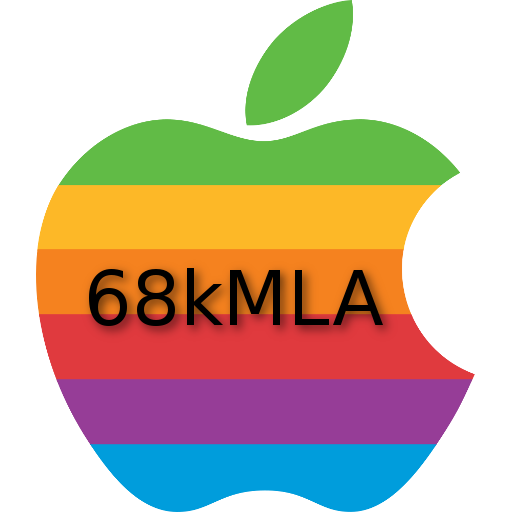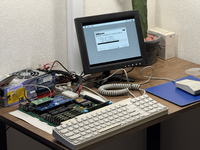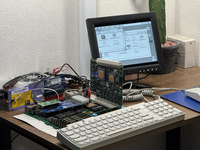Stock SE/30 is clearly faster than an SE with PerformerSE, even with 33MHz XTAL and GemStart3.0.
Oh, completely, yes. If you think about it - for starters, the RAM is on a 16bit bus in the SE, while it is 32bit in the SE/30, but then, even with the accelerator, the RAM is only 8MHz instead of 16MHz, so right up, before you consider memory wait states, the RAM is 4x slower in terms of MB/s (half for the word width, half for the MHz). The 33MHz XTAL only impacts the speed of the FPU, nothing else.
The Stock SE/30 feels much faster to me as well.
The SE/30 really is faster - remember only the CPU and FPU is 16MHz on the SE with the Performa accelerator card, while the memory, video, hard disk... ROM... etc. none of that has had an upgrade, it is just benefiting from faster execution in the CPU and FPU.
This is where Zane's card benefits - the way, way, way faster RAM and ROM give a significantly better scaling in performance in addition to the CPU MHz advantages.
I dislike relative benchmark values compared to other Macs in Apple Personal Diagnostics. Wish we could get absolute MB/sec numerical values for memory throughput instead.
Fundamentally you can never isolate memory throughput from other performance metrics - you can run a memory performance heavy benchmark, but the CPU will always be needing to do work to run the test. What you're talking about is a fundamental characteristic of the machine though, so just use the table (and similar published data for other machines) that YMK
shared earlier in the thread. Unless you use an upgrade that adds faster RAM (like Zane's) or modifies the bus speed on the motherboard (like the Brainstorm), a simple accelerator isn't going to change the maximum RAM throughput and any "memory" performance improvements are actually just improvements in compute.
This said, for later machines, Newer Gauge Pro reports a Memory throughput in MB/s, I believe by doing block copies, as does... oh, an older Newer test program. I think Newer Gauge Pro only works on PPC, but the older Gauge software (attached), specifically RAMometer, works on at least some 68k macs (I suspect not the 68000) and might do what you want.
As above though, this isn't ever going to be the actual theoretical maximum bandwidth, same as the speed of a car in traffic isn't the same as a car's top speed. It is really the issue with benchmarks - there is no perfect benchmark, at the end of the day it is all a relative comparison with assumptions.




